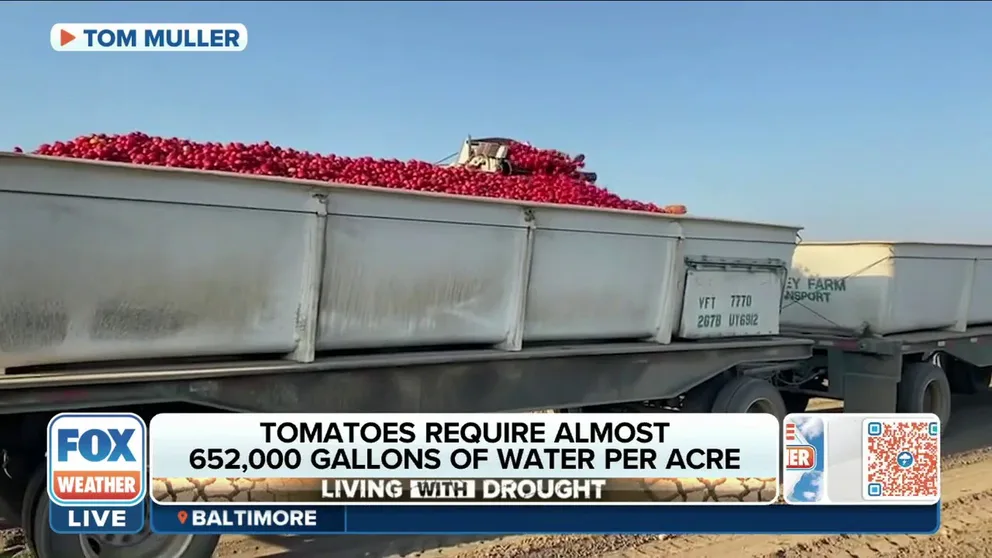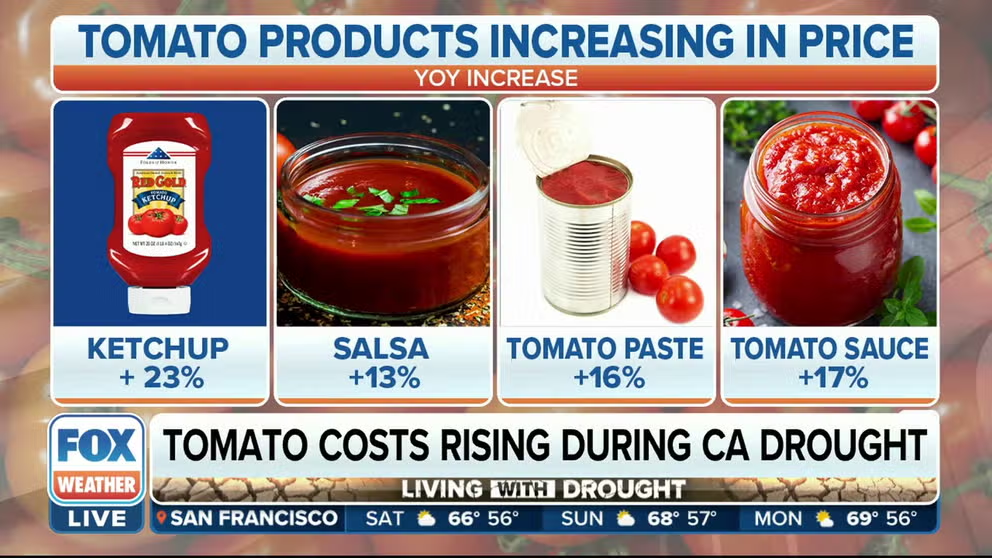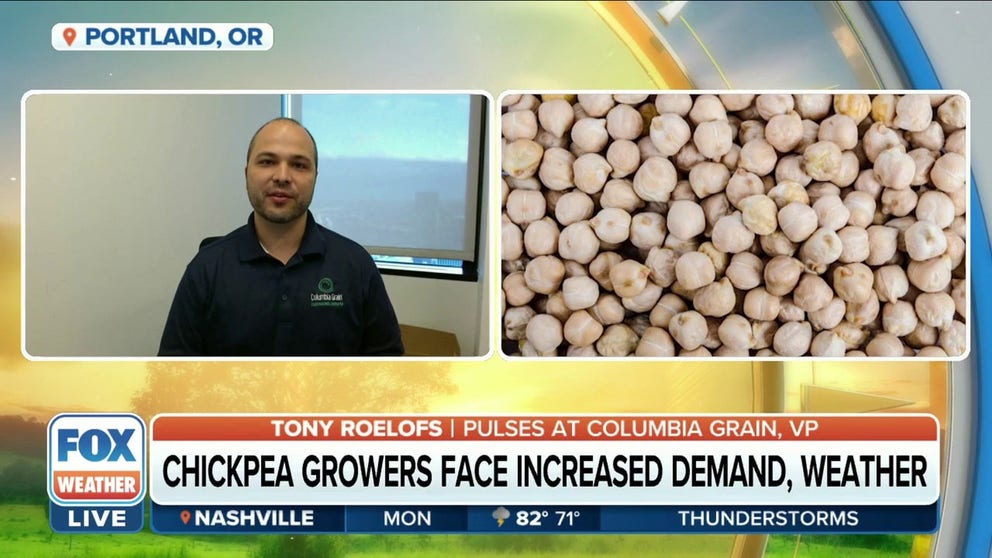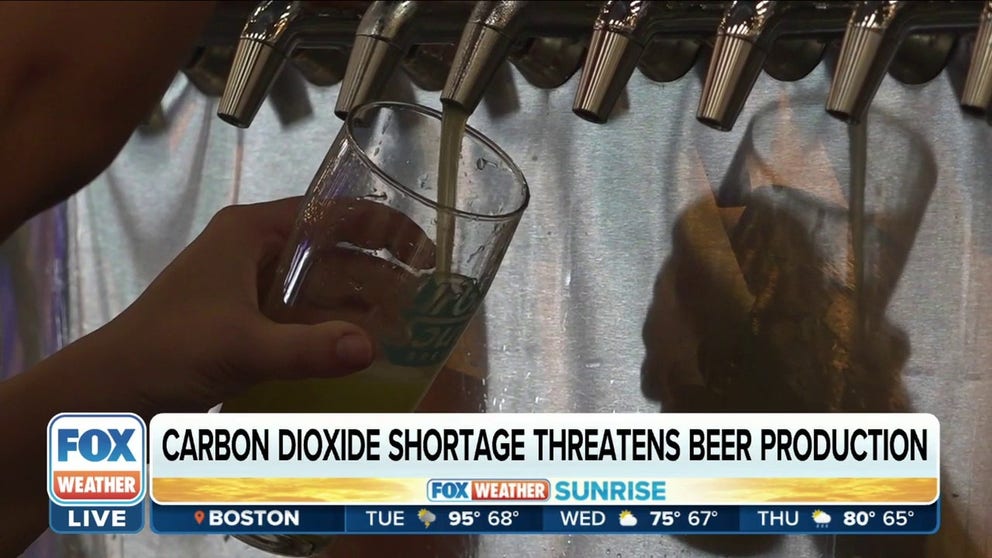California tomato farmers worried extreme drought will increase prices for sauce, ketchup
California produces about a quarter of the world's tomatoes, and the extreme drought conditions, water restrictions and wildfires are now leaving farmers struggling to meet the demand.
Northern California farmer details how drought is hindering his tomato crop
Tom Muller, a Northern California farmer, says he is 15-20% short of the acreage that he wanted to plant for his tomatoes due to the drought in California.
Drought conditions and scorching heat across the western U.S. have already led to extreme water restrictions in California and record-low water levels at Lake Mead in Nevada.
But now a new problem has sprouted up: The extreme weather is affecting tomato crops and could lead to higher prices for your favorite products like sauce, salsa and ketchup.
HOW TO WATCH FOX WEATHER ON TV
California produces about a quarter of the world's tomatoes, and the extreme drought conditions, water restrictions and wildfires are now leaving farmers struggling to meet the demand.
Tom Muller is a Northern California tomato farmer, and he joined FOX Weather to talk about how the extreme weather conditions affect his tomato crops.
"Overall drought here at my ranch. I'm about 15% to 20% short of the acreage that I wanted to plant," he said.
When it comes to water for his tomato plants, Muller said it has been challenging to get enough.
CHICKPEA DIP: EXTREME WEATHER CONDITIONS AFFECTING POPULAR SUPERFOOD CROP
'Mega-drought' hitting California tomato production
Planning a big Labor Day bash next weekend? Well, your favorite summer foods and condiments will likely cost you even more than what you paid for Memorial Day weekend. With drought roasting the West, tomato crops are taking a hit. FOX Business correspondent Kelly O'Grady heads to a California tomato farm to get a better look at what's in store.
"Our water comes from three sources," he said. "Indian Valley and Clear Lake, that gravity-flow water, and I have zero allocation from them."
Muller said there's another water source from a ranch located at Lake Shasta. But again, he has zero water allocation from that location.
"Right now, we're relying on groundwater," he said.
Like most other crops, water is vital for the successful harvest of tomato crops.
So, how much water does it take to grow tomatoes successfully?
MISSING MUSTARD: WHY THIS CONDIMENT COULD BE ABSENT AT YOUR NEXT COOKOUT
Extreme weather conditions having devastating impact on chickpea crops
Tony Roelofs, Vice President of Pulses at Columbia Grain, discusses how extreme weather conditions are having an impact on chickpea crops and how that could threaten to increase prices.
"Everything is based on acre-feet," Muller said. "We used to feral irrigate our tomato crops. That means you put water on the surface through furrows, and in the last 18 to 20 years, we've gone completely to drip irrigation. So, we've saved about 30% of what we were using before."
Drip irrigation is a tube under the ground that is pressurized and provides the exact amount of water needed to ensure the tomato crops survive.
The amount of water is determined by evaporation and by calculating how hot it will be.
"So, the stuff you guys give us, your weather forecasts, are very important to us farmers," Muller said.
SRIRACHA FANS LEFT BURNED AFTER 'UNPRECEDENTED SHORTAGE' OF PEPPER CROP HALTS PRODUCTION
Carbon dioxide shortage threatens beer production
Bad news for beer drinkers. A carbon dioxide shortage is causing problems for brewers. It's a key ingredient to make beer, and without it, some breweries are stopping production. Fox News multimedia reporter Rebekah Castor reports.
Muller said he hadn't seen a drought situation like what is taking place in California now since he was a child in 1977, which lasted about four years.
"I would say we had a drought. We had big rains here about four years ago," he said. "Last year, it rained about a total of 7 inches, the year before 6 (inches). We're normally at 18 (inches)."
Muller said there had been two 5-inch storms this year. But since all the heavy rain came at once, it didn't do much to help the drought.
"People need to know that these droughts affect people, and the price in the store is going to go up because the price for us is finally going up," he said. "I don't think you're going to see a shortage in the stores. I think you're going to have a higher price, though."



